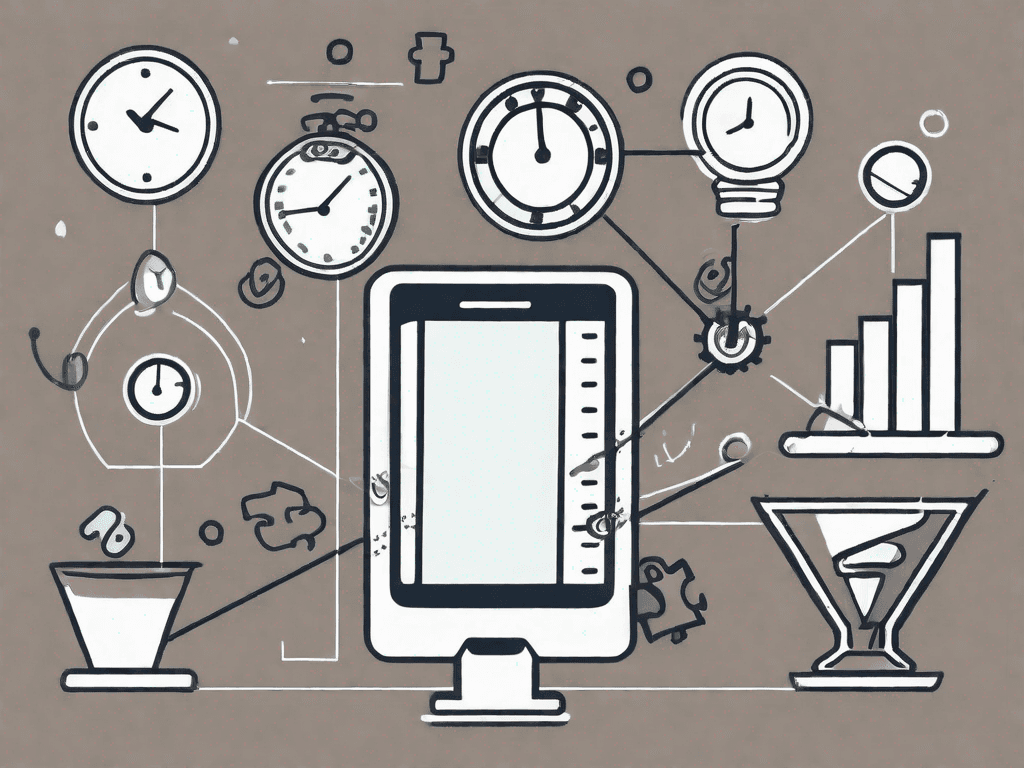
What is a Sales Funnel? (Explained With Examples)
A sales funnel is a crucial concept in marketing that helps businesses understand and analyze their customer journey. It is a visual representation of the steps a customer takes towards making a purchase, starting from their initial awareness of a product or service to the final conversion. By understanding the different stages of the sales funnel, businesses can optimize their marketing strategies and improve their conversion rates. In this article, we will explore the definition of a sales funnel, its advantages and disadvantages, and provide real-life examples in various contexts
1°) What is a Sales Funnel?
1.1 - Definition of a Sales Funnel
A sales funnel, also known as a revenue funnel or a marketing funnel, is a systematic process that guides potential customers through different stages of the buying journey. It is represented as a funnel-shaped diagram, illustrating the narrowing down of prospects as they move closer to making a purchase.
The typical sales funnel consists of several stages:
Awareness: The first stage of the sales funnel is creating awareness among potential customers about the product or service. This is where businesses attract their target audience and grab their attention through various marketing channels, such as advertisements, social media, or content marketing.
Interest: Once potential customers are aware of the product or service, they enter the interest stage. Here, businesses aim to generate interest and engagement by providing valuable information and solutions to the customers' needs or pain points.
Desire: In the desire stage, businesses work on developing the customers' desire to own the product or service. They showcase the unique features, benefits, and value proposition of their offerings to persuade potential customers to move closer to making a purchase.
Action: The final stage of the sales funnel is the action stage, where potential customers convert into paying customers by taking the desired action, such as making a purchase, filling out a form, or signing up for a service.
1.2 - Advantages of a Sales Funnel
A sales funnel offers several advantages to businesses:
Improved Conversion Rates: By understanding the customer journey and optimizing each stage of the funnel, businesses can improve their conversion rates. They can identify areas where potential customers drop off and take necessary actions to reduce friction and increase conversions.
Targeted Marketing Efforts: A sales funnel helps businesses focus their marketing efforts on the right audience at the right time. They can create personalized content and campaigns tailored to specific stages of the funnel, increasing their chances of capturing the attention and interest of potential customers.
Data-driven Decision Making: With a sales funnel in place, businesses can collect valuable data and insights about their customers' behaviors and preferences at each stage of the funnel. This helps them make data-driven decisions and refine their marketing strategies for better results.
1.3 - Disadvantages of a Sales Funnel
While sales funnels offer numerous benefits, they also have some drawbacks:
Overemphasis on Linear Approach: Sales funnels are often based on a linear approach, assuming that all potential customers will follow a predefined path towards making a purchase. However, in reality, customer journeys can be more complex and nonlinear, requiring businesses to adapt their strategies accordingly.
Ignoring Repeat Customers: Sales funnels primarily focus on acquiring new customers, sometimes neglecting the importance of nurturing and retaining existing customers. Repeat customers can provide a significant portion of a business's revenue, and ignoring them can lead to missed opportunities.
Difficulty in Attribution: It can be challenging to accurately attribute conversions to specific stages of the sales funnel, especially in a multi-channel marketing environment. This makes it harder for businesses to measure the effectiveness of their marketing efforts and optimize their strategies.
Despite these disadvantages, sales funnels remain a popular and effective marketing tool for businesses. By understanding the customer journey and leveraging the advantages of a sales funnel, businesses can enhance their marketing strategies, improve conversion rates, and drive revenue growth.
Furthermore, a well-designed sales funnel can provide businesses with valuable insights into their target audience. By analyzing the data collected at each stage of the funnel, businesses can gain a deeper understanding of customer preferences, pain points, and buying behaviors. This information can then be used to refine product offerings, tailor marketing messages, and create a more personalized customer experience.
In addition, sales funnels allow businesses to optimize their marketing efforts by identifying areas of improvement. By tracking customer interactions and behaviors throughout the funnel, businesses can identify bottlenecks, optimize conversion rates, and streamline the buying process. This data-driven approach enables businesses to make informed decisions and allocate resources effectively.
Moreover, sales funnels provide businesses with a framework for nurturing leads and building long-term relationships with customers. By guiding potential customers through the different stages of the funnel, businesses can establish trust, credibility, and loyalty. This can lead to repeat purchases, referrals, and positive word-of-mouth, ultimately driving sustainable growth and success.
Overall, a well-executed sales funnel can be a powerful tool for businesses to attract, engage, and convert potential customers. By understanding the advantages and disadvantages of sales funnels, businesses can leverage this marketing strategy to drive revenue growth and achieve their business goals.
2°) Examples of a Sales Funnel
2.1 - Example in a Startup Context
Let's consider a startup that has developed a new software application. In the awareness stage, the startup focuses on driving traffic to its website through content marketing, social media campaigns, and online advertisements. The interested prospects then enter the interest stage, where the startup provides free demos, case studies, and expert guides to showcase the capabilities of the software. In the desire stage, the startup offers limited-time discounts and highlights the positive feedback and success stories from early adopters. Finally, in the action stage, the startup provides a seamless purchase process with easy-to-use payment options, ensuring a smooth conversion for potential customers.
2.2 - Example in a Consulting Context
In the consulting industry, a sales funnel can be applied to attract and convert clients. In the awareness stage, the consultant may offer valuable content through a blog or newsletter, addressing common industry challenges. Interested prospects can then enter the interest stage by signing up for a webinar or downloading a whitepaper. The desire stage involves providing personalized recommendations and case studies to showcase the consultant's expertise. Finally, in the action stage, the consultant offers a free consultation or provides a clear call-to-action to schedule a meeting, leading to a potential client engagement.
2.3 - Example in a Digital Marketing Agency Context
A digital marketing agency can leverage a sales funnel to acquire clients in a competitive industry. In the awareness stage, the agency utilizes targeted ads, SEO strategies, and social media campaigns to generate leads. The interest stage focuses on offering free SEO audits or consultations to engage and educate potential clients. In the desire stage, the agency showcases successful case studies and client testimonials to highlight their expertise. The action stage involves offering competitive pricing packages and an easy onboarding process, ultimately converting potential clients into paying clients.
2.4 - Example with Analogies
Imagine a sales funnel as a sieve, filtering out potential customers as they progress through different stages. In the awareness stage, the sieve catches the attention of a broad audience, but as the customers move through the interest, desire, and action stages, the sieve narrows down, separating those who are genuinely interested in making a purchase and filtering out those who are not a good fit.
Another analogy is to think of a sales funnel as a journey up a mountain. At the base of the mountain, there are many interested individuals, but as the journey progresses and the climb becomes steeper, only a select few make it to the peak and become paying customers.
In conclusion, a sales funnel is a valuable tool for businesses to understand and optimize their marketing strategies. By defining the stages of the funnel, businesses can better tailor their marketing efforts, improve conversion rates, and make data-driven decisions. Through the real-life examples in various contexts, we can see how a sales funnel can be implemented effectively. While sales funnels have their advantages, it is important for businesses to also consider their disadvantages and adapt their strategies accordingly. So, next time you hear about a sales funnel, you will have a clear understanding of what it entails and how it can benefit your business.











































































































































































































